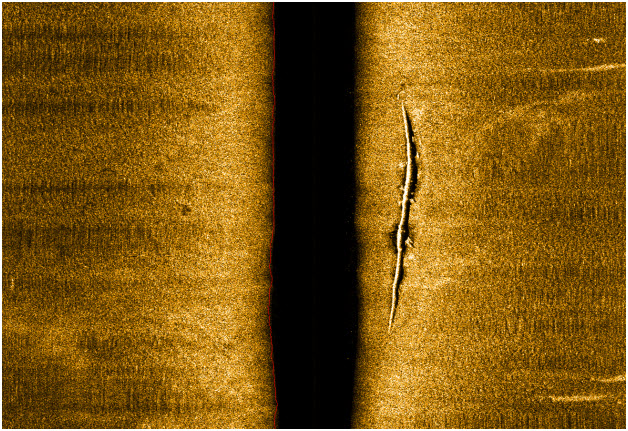
NOAA’s Office of Coast Survey, Alaska, and the nation’s economic vitality have been intertwined for 145 years. We strengthen that bond on August 1, as NOAA Ship Fairweather begins a reconnaissance survey to the northernmost tip of the Alaska’s Arctic coast. Fairweather will check soundings along a 1,500 nautical mile coastal corridor from Dutch Harbor, Alaska, to the Canadian border. (At least, we hope Fairweather can go all the way to the Canadian border… The ice cover is a little stubborn this summer, and may not recede sufficiently for safe passage. CMDR Jim Crocker, the ship’s commanding officer and chief scientist of the party, will keep us updated through the coming weeks. Watch this blog site for Fairweather updates!)
Continue reading “Arctic reconnaissance survey checks old soundings to prioritize future surveys”
Capturing the seafloor’s rich history while positioning America for the future
Coast Survey’s Navigation Response Team 4 is conducting a year-long survey of the sea floor in the Port of Houston and Galveston Bay navigational areas, re-measuring ocean depths and searching for dangers to navigation. Coast Survey will use the data to update future nautical charts to help mariners protect lives and increase shipping efficiencies. Recently, the team also found an opportunity where they could support marine archeological preservation.
Last week, the navigation team worked with federal and state partners who help us understand the rich history – and the secrets of human sorrows – lying on the seafloor. In collaboration with NOAA’s Flower Garden Banks National Marine Sanctuary and the Texas Historical Commission’s Marine Archeology Division, the navigation response team — with the State Marine Archeologist onboard — re-mapped the location of two historically significant wrecks. (Some of the data was collected under an antiquities permit, as Texas requires for investigating historic shipwrecks in state waters.)
Continue reading “Capturing the seafloor’s rich history while positioning America for the future”
Survey discovers exposed natural gas pipeline south of Mobile Bay
Ocean floors are always changing. Coast Survey’s hydrographic surveys are intended to find and measure those changes. Often, we need to do more than that, as shown by a recent survey of the seafloor in Alabama coastal waters.
A Coast Survey contractor ‒ David Evans and Associates ‒ found a large high-pressure natural gas pipeline that had been uncovered and was lying exposed, as shown by this side scan sonar image. The exposed 36-inch diameter pipeline, pressured to 2,100 psi, posed a threat to navigation and the environment.

Continue reading “Survey discovers exposed natural gas pipeline south of Mobile Bay”
Meet the men and women of today’s Coast Survey

Since President Thomas Jefferson asked for a survey of the coast in 1807, Coast Survey has been the nation’s trusted source for nautical charts covering the coastal waters of the U.S. and its territories.
Continue reading “Meet the men and women of today’s Coast Survey”
